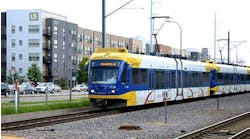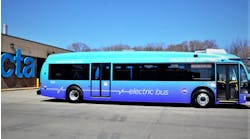The Central Oklahoma Transportation and Parking Authority is reporting an increase in METRO Transit riders in 2012.
According to a recent ridership report, the public transportation system saw an increase of 133,949 new trips for the year, a 5.44 percent increase from 2011. In addition to an overall increased bus ridership, downtown ridership also increased by 5.86 percent in 2012.
“The boost in demand can be attributed to the City Council’s additional funding for improving the frequency of several routes,” said Rick Cain, administrator of COTPA and director of public transportation and parking for the City of Oklahoma City. “Gas prices and milder weather also likely had an impact. We expect to see the trend continue as new transit technologies are introduced.”
With unlimited day passes at $4, unlimited week passes at $14 and unlimited monthly passes at $50, Cain says riding the bus is an economical alternative to fueling up and maintaining a car. Senior passes are also available at half the regular rates.
According to the American Public Transportation Association’s January Transit Savings Report, individuals who ride public transportation instead of driving can save, on average, more than $875 a month and $10,502 annually. These savings are based on the cost of commuting by public transportation compared to the cost of owning and driving a vehicle which includes the January 17, 2013 average national gas price ($3.29 per gallon- reported by AAA) and the national unreserved monthly parking rate.
“There are other national trends that will likely continue to increase demand for bus services,” added Cain.
Nationally, it is estimated that as the baby boomer population continues to age, demand for public transportation will increase. There are also studies that show younger generations have less of a desire to drive.
Research conducted by the U.S. Public Interest Research Group found that people aged 16 to 34 are driving less. The average young person drove 23 percent fewer miles in 2009 than the average young person in 2001, and from 2000 to 2010, the share of 14 to 34-year-olds without a license increased from 21 to 26 percent. According to the report, between 2001 and 2009, the annual number of miles traveled by 16 to 34 year olds on public transit such as trains and buses increased by 40 percent.
“While we’re encouraged to see an increase in ridership, we know our system has short comings,” said Cain. “We are working diligently to evaluate our system and make incremental improvements so that our public transportation system is relevant and convenient to use.”
COTPA recently entered into a contract with transportation planning firm Nelson Nygaard to review, evaluate and make recommendations to improve the operating efficiency of the current public transportation system given the current funding.
The study is currently underway and will seek public input later this spring with results expected in early May.
In addition to the system review, METRO Transit will be launching several improvements in 2013. The organization will implement real-time technology which uses satellites to track vehicles on their routes. This allows riders to track the location of buses from their computer or smart phone and know, to the minute, when the bus will arrive at their stop. The organization will also work to increase availability of information at bus stops.
METRO Transit will also be launching a new website and a mobile website, both with capabilities to purchase passes online. The site will also offer more transparency by providing ridership and on-time data and a developer center that will provide resources to software developers to promote the use of transit and information related to transit.



